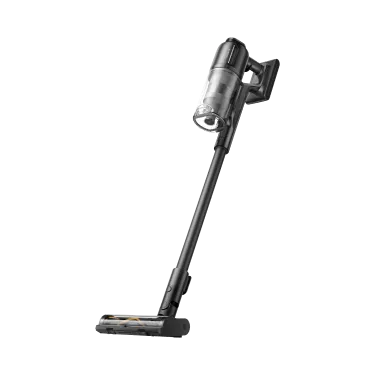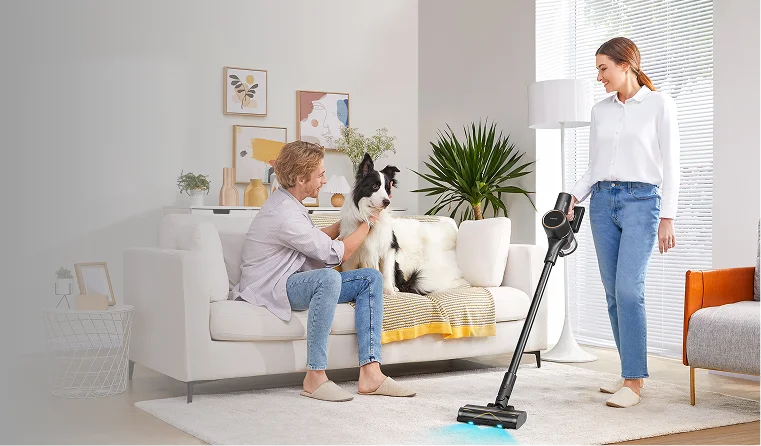How do robot vacuums move across the floor vacuuming, cleaning, and sweeping? When they were first launched, robot vacuums used basic technology and would move haphazardly when cleaning. They were able to clean large areas but were inefficient as they keep cleaning the same places.
More developed models use an advanced robot vacuum navigation system, which is enabled by algorithms and sensors. The technology allows the vacuum to move in straight lines, covering all areas. The vacuum robot needs to map your home first to be able to clean effectively. It will then store this information and use it when vacuuming in the future.
What is Robot Vacuum Mapping?
Robot vacuum mapping is a process by which robot vacuums map your house during the initial cleaning. Mapping helps the robot understand how the house looks like, making it easier to clean all areas, and the majority of high-end models are capable of cleaning hard surfaces and carpets alike. Even in textures that seem similar, mapping helps it avoid the sections that it has already cleaned.
This map can be saved in a smartphone app using the map saving option, which is especially helpful for larger homes. You can also use the app to pick areas that you want the robot to clean if you prefer zone cleaning.
After buying the robot vacuum, stay home when it's cleaning for the first time and monitor the process. Since it's doesn't understand your house, it needs to learn the routes.
Whenever a robot vacuum follows the route, they eventually will have to dock to recharge, but how do robot vacuums find their base? After cleaning or when the robot has run out of charge, infrared signals show where the base is. The robot vacuum navigates to the base. After recharging, it continues to clean the home. Though the process may seem straightforward, there are many different methods that a device can use to map out the home.

The Main Types of Mapping Technology
Vacuums use different technologies to map a house, which may include the 4 following main mapping technologies discussed in this section.
Camera-based mapping
This technology uses a digital camera that maps by taking photos of landmarks around the house. While this technology maps well, it does not work in the dark. But some manufacturers are beginning to add a source of light on some of the devices.
Lidar-based mapping
Lidar is an invisible spinning laser that detects information. It collects data on the room's size and obstacles, such as legs at the laser level, but it starts by mapping the house, cleaning it systematically in straight lines instead of randomly.
Lidar technology is the most precise at mapping and has accurate navigation compared to the others.
Gyroscope or accelerometer mapping
Gyroscope and accelerometer sensors calculate the distance and direction of objects around the house.
The vacuums that use this technology are affordable. But it does not create a precise map and does not navigate as well as vacuum robots that use lidar and camera-based technologies.
Combined technologies
Some vacuum robots combine two or three mapping technologies. These technologies are used together with sensors and the robot vacuum cleaner algorithm to help the device navigate efficiently.
Sensors Help with Robot Vacuum Navigation
Robot vacuums use mapping to form route cleaning, and while they are moving, they use sensors to detect road conditions. Let’s take a look at cliff sensors, obstacle sensors, and other forms of tech that help these devices work.
Cliff sensors
All vacuum robots have cliff sensors as a safety requirement. Cliff sensors use infrared light, which is reflected from objects. The objects then send a signal back to the receiver in the vac.
If the vac does not receive any signal, the receiver detects no object and changes the path. This will prevent your vacuum from falling off the staircase.
Obstacle sensors
When cleaning your home, a vacuum will inevitably come across obstructions from furniture and other things that lie on the floor. Obstacle sensors, which are typically placed on a vacuum's bumpers, will guide it through the obstacles.
When the vacuum comes into contact with an object, the sensor will go off, forcing the vacuum to steer away from it.
Wall sensors
These sensors use infrared light to detect walls and then clean along the boundaries. The robot will do so effectively and without bumping the walls.
Wheel sensors
Light sensors count the wheel rotation to determine the distance it has covered. Although it was common to use these sensors when robot vacuums were new, only low-end models use them.
How Does Dreame Robot Vacuum Navigate Your Home?
The Dreame F9 combines the camera and gyroscope mapping technology to move around your home when cleaning. The device can quickly learn the surroundings that it needs to know for cleaning purposes. This vacuum can capture up to 30,000 data points in the blind of an eye, creating an internal memory of the home so that it misses nothing during cleanup. With automatic room recognition, the Dreame robot vacuum moves effortlessly from one room to the next to clean, knowing exactly where it is at all times.
Even after this robot vacuum maps out its path, it continues to calculate any changes in the path at a rate of 50 times in each second. This constant update of barriers gives it greater navigation skills to prevent damage and sense any fine particles that it needs to clean up.
Dreame F9 has 14 infrared sensors, the device uses 8 of those sensors to check for obstacles in its path to avoid collision. The other sensors are used to map out the direction that the vacuum goes as it transitions from hard floors to carpet or as it nears the steps. Still, that doesn’t mean that the Dreame F9 is ill-prepared for obstacles since it is programmed to cross anything up to 20 mm.

The upgrades in learning and exploration which is called pioneer 2.0 Visual Navigation System allow users to link up the Dreame app with their vacuum, giving the user the power to program wall barriers with ease. And the cleaning route can be further customized by using the app interface to choose which parts of the home are off-limits.
Though the app also gives the user control over where they want it to clean. This app is available in both the Google Play store and the App Store (for Apple), so anyone should have the access to download it.
With all of this advanced technology, the Dreame robot vacuum can continue to clean the home for up to 150 minutes (2 hours and 30 minutes) before it needs to dock and charge. If it runs out of power, it will automatically go to the base station and recharge. The base acts as both a resting and charging station, but there’s no need to go plug it in or order it to go charge. Instead, the smart technology will signal to the vacuum to go charge to eliminate the risk of losing power while cleaning.

























































































 Australia
Australia 中国大陆
中国大陆 日本
日本


 Türkiye
Türkiye


 Italia
Italia
 Netherlands
Netherlands Belgium
Belgium
 Greece
Greece Polska
Polska
 Norway
Norway
 Sweden
Sweden
 Finland
Finland
 Denmark
Denmark
 Hungary
Hungary Czechia
Czechia
 Slovenia
Slovenia
 Croatia
Croatia
 Switzerland
Switzerland United Kingdom
United Kingdom
 Canada
Canada

